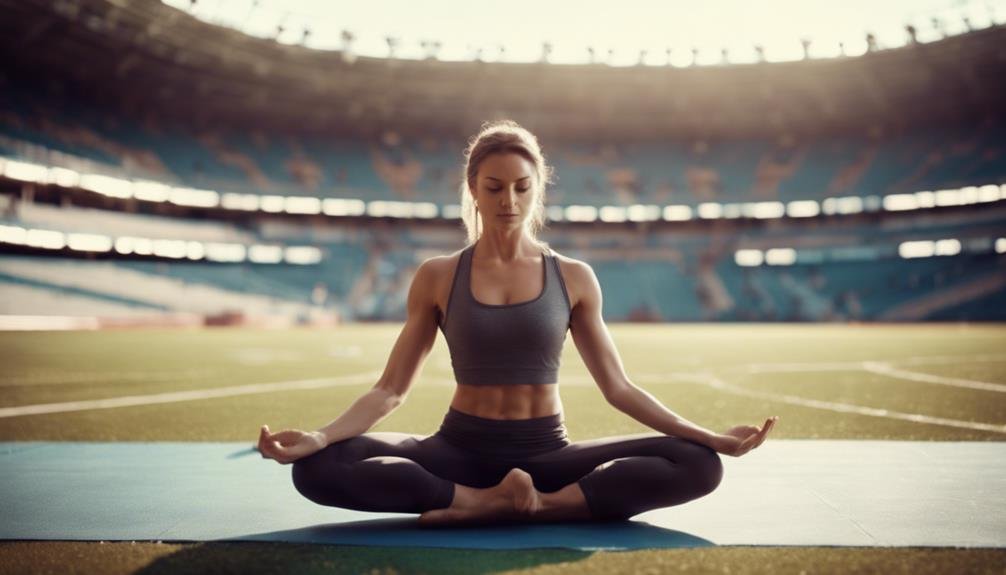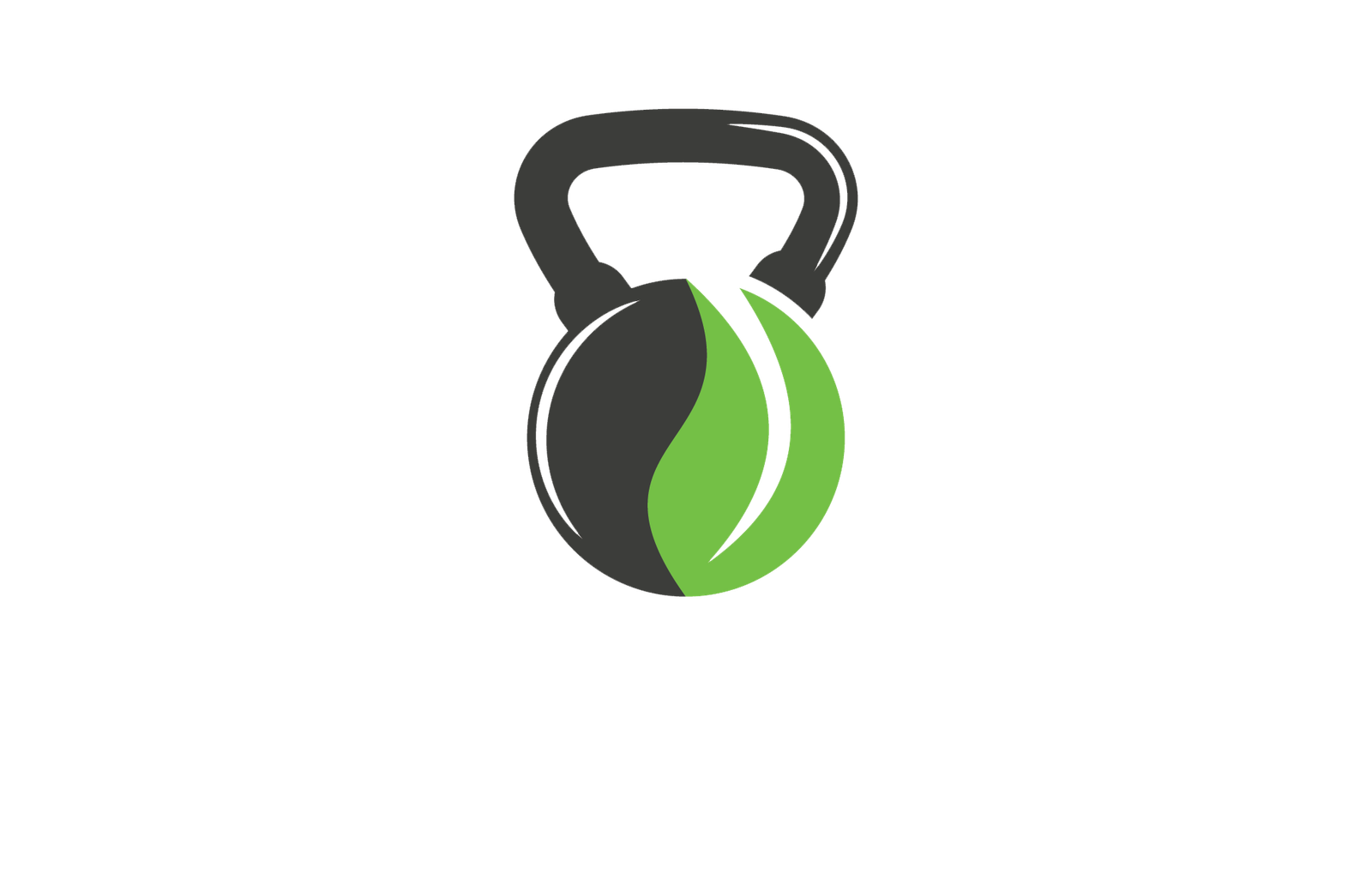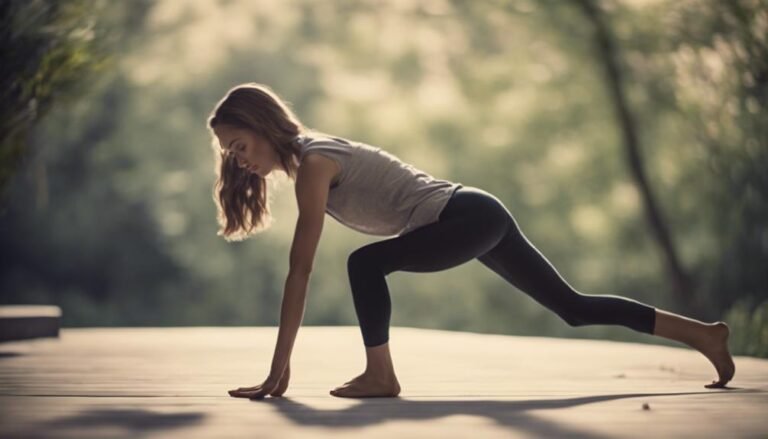Don't miss our holiday offer - 20% OFF!

Yoga Routines Tailored for Athletes
We athletes know that yoga routines tailored to our specific sports can optimize performance, prevent injuries, and give us a competitive edge. By incorporating yoga into our training, we can build strength and endurance, improve flexibility, and enhance power. We can also develop mental toughness and focus through targeted breathing techniques and concentration exercises. Whether we're football players, runners, or cyclists, a customized yoga routine can help us gain a competitive advantage. And the best part? By integrating yoga into our training, we can tap into even more benefits – let's explore the specifics.
Key Takeaways
- Customized yoga routines tailored to specific sports, such as football or basketball, amplify performance gains and reduce injury risk.
- Yoga routines incorporating strength-building postures, like plank and boat, improve overall athletic performance and reduce injury risk.
- Flexibility-focused yoga routines increase range of motion, reduce stiffness, and enhance athletic performance, particularly in hip-intensive sports.
- Integrating yoga into training regimens enhances overall performance, flexibility, balance, and strength, preparing bodies for intense physical activity.
- Targeted breathing techniques, such as the 4-7-8 Breathing method, aid in recovery, slowing down and recharging the body.
Building Strength and Endurance
As we explore yoga routines designed to build strength and endurance, we focus on poses that engage our core, legs, and upper body, allowing us to cultivate a strong foundation and boost our overall physical stamina. We prioritize core activation, as a stable core enables us to generate power, maintain good posture, and reduce the risk of injury. By incorporating poses that target our core, such as plank, boat, and side plank, we can improve our overall athletic performance.
However, we must also be mindful of muscle imbalances that can lead to poor posture, decreased strength, and increased risk of injury. Yoga routines tailored to athletes should aim to identify and address these imbalances through targeted exercises and stretches. For example, we may incorporate poses that strengthen our glutes and hamstrings to counterbalance the dominance of our quadriceps. By doing so, we can optimize our strength, endurance, and overall athleticism. By integrating these principles into our yoga practice, we can take our athletic performance to the next level.
Flexibility for Improved Range
By incorporating flexibility-focused yoga routines into our practice, we can increase our range of motion, reduce stiffness, and enhance our overall athletic performance. As athletes, it's evident that flexibility is key to peak performance, and yoga can help us achieve that. By incorporating hip openers like pigeon pose and downward-facing dog, we can improve our range of motion in our hips, allowing for more powerful and efficient movements. This is especially important for athletes who require explosive power, such as sprinters or jumpers. Additionally, shoulder expansion exercises like shoulder rolls and chest opens can help improve our posture, reduce tension, and increase our overall mobility. By incorporating these exercises into our yoga practice, we can improve our overall flexibility, reducing the risk of injury and enhancing our athletic performance. With regular practice, we can expect to see improvements in our flexibility, allowing us to perform at our best.
Injury Prevention Strategies
As we explore injury prevention strategies in our yoga routines, we'll examine the common injuries that can occur in sports and physical activities, and discuss ways to prevent overuse injuries that can sideline us from our practice. We'll also identify high-risk areas in our bodies that are prone to injury, so we can take proactive steps to protect them. By understanding these potential pitfalls, we can develop a more mindful and sustainable approach to our yoga practice.
Common Injuries in Sports
We commonly see athletes sidelined by preventable injuries, highlighting the importance of understanding common injuries in sports and developing effective prevention strategies. As athletes and trainers, we've seen it time and time again – a star player taken out by a preventable injury, leaving their team scrambling to adjust.
| Injury | Prevalence |
|---|---|
| Concussions | 300,000+ per year in US high school sports |
| Ankle sprains | 45% of all basketball injuries |
| ACL tears | 1 in 100 athletes per season |
| Shin splints | 13% of all running injuries |
| Groin pulls | 10% of all soccer injuries |
Preventing Overuse Injuries
Since even the most common injuries can be prevented with the right strategies, let's explore the proactive steps we can take to prevent overuse injuries. As athletes, we're all too familiar with the frustration and disappointment that comes with being sidelined due to injury. But by being proactive and taking preventative measures, we can reduce our risk of getting hurt.
So, what can we do to prevent overuse injuries? Here are a few key strategies to keep in mind:
- Listen to our bodies: Paying attention to early warning signs, such as pain or fatigue, can help us catch injury patterns before they become more serious problems.
- Mix it up: Varying our training routines and incorporating different exercises can help reduce repetitive stress on our joints and muscles.
- Take rest days: Giving our bodies time to recover and recharge is essential for preventing overuse injuries.
Identifying High-Risk Areas
When it comes to preventing overuse injuries, pinpointing high-risk areas in our bodies and training routines is essential, as these vulnerable spots can quickly escalate into full-blown injuries if left unchecked. As athletes, we need to identify these areas and address them proactively to avoid setbacks. One way to do this is through posture analysis, which helps us identify muscle imbalances and areas of tension that can lead to injury. By analyzing our posture, we can pinpoint areas where our bodies are compensating for weaknesses or inefficiencies, and develop targeted exercises to strengthen those areas.
For example, if we notice that our shoulders roll forward during a posture analysis, it may indicate a muscle imbalance between our chest and back muscles. This imbalance can put us at risk for shoulder injuries, but by incorporating exercises that strengthen our back muscles and improve our posture, we can reduce that risk. By identifying and addressing these high-risk areas, we can reduce our risk of injury and optimize our performance. By being proactive about identifying and addressing these areas, we can stay healthy, perform at our best, and achieve our athletic goals.
Yoga for Enhanced Power
By incorporating specific yoga routines into our practice, we can substantially boost our physical power, increasing strength, speed, and agility. As athletes, it is clear that power is essential for peak performance, and yoga can play a crucial role in tapping our full potential. By targeting our core and improving our neuroplasticity, we can enhance our overall power output.
Three key ways yoga can help:
- Core activation: Yoga helps strengthen our core muscles, which are essential for generating power. By engaging our core, we can transfer force more efficiently, resulting in increased power and speed.
- Neuroplasticity: Yoga helps rewire our brain-body connection, allowing for more efficient communication between our nervous system and muscles. This enhances our ability to recruit muscles and generate force.
- Force production: Yoga improves our ability to produce force by increasing our muscle-tendon elasticity, allowing us to generate more power with each movement.
Agility and Speed Drills
As we explore agility and speed drills in our yoga routines, we're going to focus on exercises that challenge our bodies to move quickly and efficiently. We'll start with rapid plyometric exercises that explosively engage our muscles, followed by lateral movement drills that improve our ability to change direction on a dime. By incorporating these exercises into our practice, we'll be able to accelerate our movements and tap into a new level of athleticism.
Rapid Plyometric Exercises
We incorporate rapid plyometric exercises into our yoga routines to explosively enhance agility and speed, priming our bodies for high-intensity movements. This type of training is essential for athletes, as it enables us to generate explosive force and rapidly change direction. By incorporating rapid plyometric exercises into our yoga routines, we can improve our overall athletic performance.
Here are three ways we use rapid plyometric exercises to take our yoga practice to the next level:
- Muscle activation: We use rapid plyometric exercises to activate our muscles, ensuring they're firing properly and efficiently. This helps us generate maximum power and speed.
- Plyometric movements: We incorporate plyometric movements like jump squats and box jumps to improve our explosive force and power.
- Agility drills: We incorporate agility drills like shuttle runs and cone drills to improve our speed, agility, and quickness.
Lateral Movement Drills
Incorporating lateral movement drills into our yoga routines allows us to substantially enhance our agility, speed, and overall athletic performance, particularly in sports that require rapid changes of direction. As athletes, it's essential to recognize that quick lateral movements are vital in many sports, such as soccer, basketball, and tennis. By incorporating lateral agility drills into our yoga practice, we can improve our ability to quickly change direction, accelerate, and decelerate.
We can achieve this by incorporating dynamic movements that target our hips, legs, and core. For example, we can practice lateral shuffles, carioca drills, and side-to-side movements that mimic game-like scenarios. These exercises not only improve our speed and agility but also strengthen our core and legs, reducing our risk of injury. By incorporating lateral movement drills into our yoga routines, we can take our athletic performance to the next level and gain a competitive edge in our respective sports.
Acceleration Training Methods
Our acceleration training methods focus on agility and speed drills that rapidly improve our reaction time, allowing us to explosively accelerate and decelerate on the field or court. These drills are designed to enhance our ability to quickly change direction, accelerate, and decelerate, giving us a competitive edge in our respective sports.
To achieve proper synchronization and explosive acceleration, we incorporate the following drills into our training:
- Shuttle Runs: We set up two cones 10-15 yards apart and perform shuttle runs, focusing on rapid acceleration and deceleration.
- Carioca Drills: We use cones to create a zigzag pattern, practicing rapid changes of direction and speed.
- Resistance Band Training: We use resistance bands to perform explosive acceleration exercises, such as band-resisted sprints and decelerations.
Mental Toughness and Focus
Developing mental toughness and focus through yoga routines allows us to tap into a deeper sense of self-awareness, discipline, and resilience. As athletes, it is essential to recognize that mental toughness is just as vital as physical strength in achieving success. Yoga helps us cultivate this mental resilience through mindful meditation and concentration exercises. By incorporating these practices into our training, we can improve our ability to stay focused under pressure and bounce back from setbacks.
In our yoga routines, we prioritize mindful meditation to quiet the mind and cultivate inner calm. This, in turn, enhances our concentration and allows us to stay present in the moment. We also incorporate concentration exercises to strengthen our mental resolve, such as focusing on a single point or repeating a mantra. These exercises train our minds to stay fixed on a goal, even when faced with distractions or adversity. By combining these practices, we can develop the mental toughness and focus needed to perform at our best, even in high-pressure situations.
Breathing Techniques for Recovery
As we push ourselves to new heights, we need to prioritize recovery, and that's where targeted breathing techniques come in, helping us to slow down and recharge. When we're in the midst of intense training, it's easy to overlook the importance of relaxation techniques. But trust us, they're essential for peak performance.
Incorporating specific breathing exercises into our routine can work wonders for our recovery. Here are a few techniques we've found particularly effective:
- 4-7-8 Breathing: Also known as the 'relaxation breath,' this technique involves inhaling through our nose for a count of 4, holding for 7, and exhaling through our mouth for 8. This slows down our heart rate and promotes relaxation.
- Box Breathing: This technique involves breathing in for a count of 4, holding for 4, exhaling for 4, and holding again for 4. This helps us focus and calm our minds.
- Alternate Nostril Breathing: This yogic breathing technique involves closing one nostril and inhaling through the other, then switching to exhale. This helps balance our breath and calm our nervous system.
Customized Routines by Sport
By tailoring our yoga routines to specific sports, we can amplify performance gains and reduce the risk of injury. As athletes, it's clear that each sport demands unique physical and mental requirements. That's why we design our yoga practices to address the distinct needs of each sport. For instance, football players require explosive power and agility, so we focus on dynamic movements and strength-building postures. In contrast, distance runners need to improve their flexibility and endurance, so we incorporate longer holds and flowing sequences.
Integrating Yoga Into Training
We seamlessly incorporate yoga into our training regimens, recognizing that a well-structured practice can be a game-changer in achieving peak performance. As athletes, it is clear to us that integrating yoga into our training enhances our overall performance. By incorporating yoga, we improve our flexibility, balance, and strength, allowing us to perform at a higher level.
- Pre-Game Prep: We use yoga to prepare our bodies for intense physical activity, increasing our flexibility and reducing the risk of injury.
- Active Recovery: Yoga helps us recover from intense training sessions, reducing muscle soreness and improving our overall mental and physical well-being.
- Mental Toughness: Through yoga, we cultivate mental toughness, developing a stronger mindset that allows us to push through challenges and stay focused under pressure.
Frequently Asked Questions
Can Yoga Really Help Improve My Athletic Performance?
We're often asked if yoga can truly boost athletic performance, and our answer is a resounding yes – by enhancing endurance, building core strength, promoting muscle activation, and fostering mental toughness, while also preventing injuries.
Do I Need to Be Flexible to Start a Yoga Routine?
"We don't need to be flexible to start a yoga routine; it's about mind over matter, focusing on body awareness to modify poses, making yoga accessible to anyone, regardless of flexibility level."
How Often Should Athletes Practice Yoga for Optimal Results?
We find that fostering flexibility and frequency is fundamental; consistency matters, so we aim for an ideal frequency of 2-3 times a week, overcoming scheduling challenges to achieve progressive overload and exceptional results.
Can Yoga Help With Recovery After a Tough Game or Practice?
"We've found that post-game yoga helps us recover faster by reducing muscle soreness and improving flexibility, while also providing mental rejuvenation and injury prevention, getting us back to peak performance sooner."
Will Yoga Make Me Less Aggressive or Competitive in My Sport?
As we plunge into the heart of competition, a fiery flame that fuels our passion, we ask: will embracing yoga's mindful attitude tame our aggressive intentions, or will it refine our edge, making us sharper, more focused athletes?
Conclusion
As we wrap up our exploration of yoga routines tailored for athletes, remember that "practice makes permanent." By incorporating yoga into our training regimens, we're not just building strength and endurance, but also cultivating mental toughness and focus. By integrating these routines into our daily practice, we'll be unstoppable on the field, court, or track. So, take a deep breath, get on your mat, and let's get ready to elevate our game!



